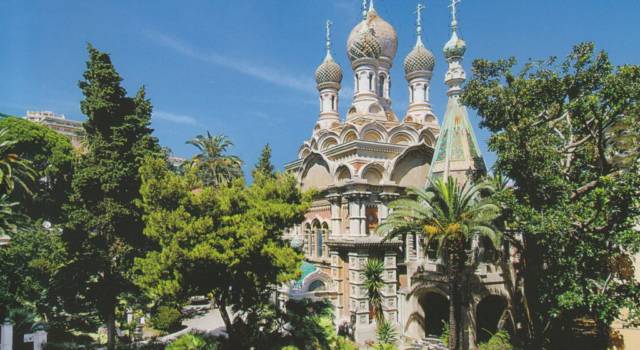The Russian Church at the end of the 19th century, the members of the Russian Community of the city decided to build a church dedicated to the orthodox cult, that was consecrated in 1908 and inaugurated in 1913, under the name of Christ the Saviour and used since by the Orthodox Community up to the present days. After the Tsarina Maria Alexandrovna’s winter stay, in 1874 and ‘75, a lot of aristocratic Russian families started to come, also hoping to heal from tuberculosis, thanks to the mild and healthy weather of the Riviera. In 1912, the Tsar Nicola gave the authorisation to raise funds for the building of a church in Sanremo, and he personally donated 2000 rubles. Count Giuseppe Tallevici bought a wonderful lot of land in the city center, in front of the train station, paying 18 thousands rubles for it. The construction project was given to the architect Aleksej Viktorovic Scusev, who will be the designer of Lenin’s Mausoleum, in the Soviet period. Engineer Pietro Agosti actually worked solo on the construction, that’s why he is considered the main builder of the Church.
Structure
This harmonious church is built in the Byzantine style, and has three bodies linked one to the other. The church has a rectangular shape and is composed of a large nave for the churchgoers and a semi circular abse and an iconostasis in between and separated from the nave by 3 great doors; the central one is also called the Tsar’s door, is locked by a 1 meter high iron gate.
The outer door is made of 4 lateral arches surmounted by 5 domes. The central dome is 50 meters high and all of the domes are gilded shining with Russian three arms crosses on top of them.
Inside the church, never fully completed because of the breaking of the 1917 revolution, we can see a number of sacred ex voto items, while in the churchyard we can admire 2 busts of the King of Italy his wife Queen Elena of Montenegro ( she was brought up in the orthodox faith).
The crypt is the burial place of Queen Elena’s parents and other Montenegrin royal members, as well as Nicola I and his wife Milena until 1989, when their bodies were translated to Montenegro.

